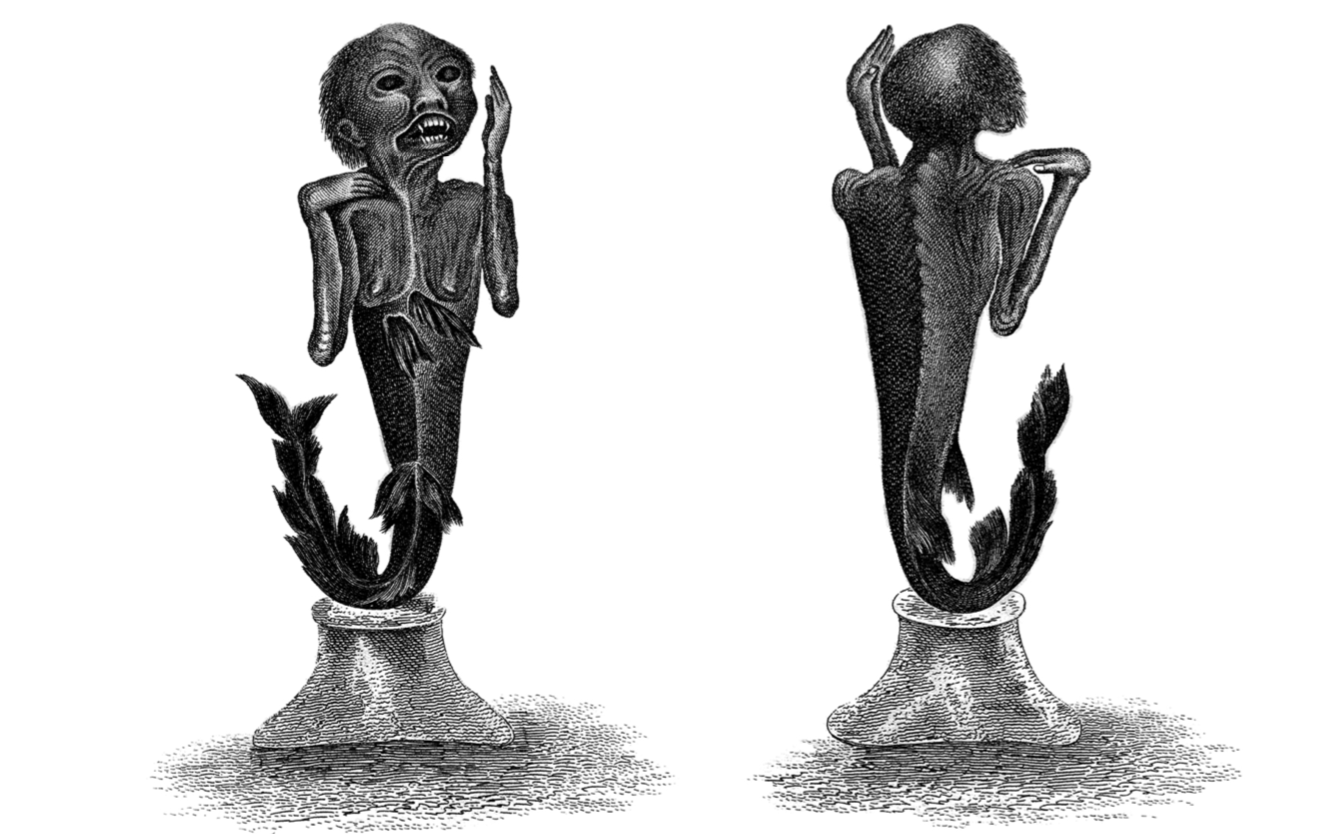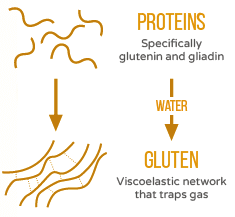While analysing the rules regarding the treatment of a firstborn donkey, the Talmud is sidetracked into a discussion of the breeding techniques of various animals.
בכורות ח, א
הדולפנין פרין ורבין כבני אדם מאי דולפנין אמר רב יהודה בני ימא
Dolphins reproduce like people. The Gemara asks: What are dolphins? Rav Yehuda says: They are creatures that are called sons of the sea.
And what exactly are those “sons of the sea”? Here is the explanation of the great French commentator Rashi (1040-1105):
דגים יש בים שחציין צורת אדם וחציין צורת דג ובלע"ז שריינ"א
There are certain fish in the ocean; half of the body has a human form, and half has the form of a fish. In French it is called a sereine.
Mermaids in early Greek and Rabbinic Literature
Today in French the word sirène means a mermaid, just as it did in the time of Rashi. And Sirenia is the scientific name for an order of aquatic herbivorous mammals such the manatee, which have a sort-of-human- form (if you don’t look too closely). But Rashi lived about five hundred years after the redaction of the Talmud, and so his explanation might not be exactly what R. Yehuda had in mind. However, the Sifra, the halakhic midrash (legal exegesis) on Leviticus, also mentions a sea creature called the sirene. And the Sifra was composed sometime before 350 CE, about 700 years before Rashi lived. The Sifra notes that when the Torah lists the aquatic animals that cannot be eaten (Lev. 11:10) it includes the seranit (הסרנית).
'חיה' – זו חית הים; 'הנפש' – להביא את הסרנית. יכול תהיה מטמא באהל כדברי ר' חנינא? תלמוד לומר (במדבר יט, יד): זאת
In Greek literature, the sirens were dangerous sea creatures whose sensuous voice would lure sailors to their deaths. These stories appear Homer’s in the epic poem the Odyssey, composed around 800 BCE, which is to say, around 500 years before the composition of the Sifra. The point is, the legend of the mermaid has been around was around long, long before Rashi described them in his commentary. And it continued for many centuries after.
A manatee, or a mermaid?
Christopher Columbus saw mermaids
Christopher Columbus (yes, the one who “discovered” America) saw mermaids. Three of them. In an entry in his diary dated January 9th 1493 he wrote he had sighted three mermaids “which rose well out of the sea; but they are not so beautiful as they are painted, though to some extent they have the form of a human face.” These were most likely dugong, which has a fusiform body with no dorsal fin or hind limbs, and flippers in place of arms.
“Since once I sat upon a promontory,
And heard a mermaid on a dolphin’s back
Uttering such dulcet and harmonious breath,
That the rude sea grew civil at her song:
And certain stars shot madly from their spheres,
To hear the sea-maid’s music.”
More Modern sightings of Mermaids
Mermaid sightings continued. In 1881 there were reports of of them in the Susquehanna River in York, Pennsylvania. Actually, there were five sightings, though all made by the same fisherman, a Mr. Henry Loucks, on what was, apparently, a slow news day:
He says it comes to the surface, looks about it, then gradually sinks down leaving its hair floating on top of the water for a moment or so and finally disappears. It has the face of a woman and beautiful glossy black hair, but as it only shows itself down to the shoulders, he cannot tell what the other end is like.
He says he could shoot it but is afraid he might be arrested and tried for murder, and it would bring him into trouble. On being asked if it had a comb or looking glass with it. “It might have had, but he didn’t see it” and supposes it has a cave somewhere in the bottom of the river under the deep water.
Mr. Henry Loucks, the fisherman above alluded to, is well known in town, and he is considered as reliable as any fisherman on the river. We are in hopes that the mermaid may be captured alive, if possible, or dead, if it cannot be had any other way, and guarantee him a safe delivery out of his troubles if he shoots it.
mermaids in the writings of the Chida, and in P.T. Barnum’s Museum
Chaim Yosef Dovid Azulai, known as the Chidah (1724-1806) was a rabbi, kabbalist, prolific scholar and major fundraiser for the Jewish settlement on Jerusalem. In his encyclopedic Midbar Kademut he described the same siren we read in Rashi on today’s page of Talmud, but with some additional flourishes.
דג יש בים שקורין סירינ"ה מחציו ולמעלה כדמות אשה בתולה ומחציו ולמטה כתבנית דג ומקום משכנה בסלעים ומקומות מסוכנים בים ומדי עבור איזה ספינה תתחיל לשורר ולזמר בקול נעים הרבה עד כי תפיל חבלי שינה על כל אנשי האניה, ואחר כך נכנסת לתוכה והורגת ואוכלת יושביה
The top part of the body is that of a virgin, the bottom that of a fish. It lives among rocks in dangerous places, and when a ship passses it begins to sings with a beautiful voice, until the sailors are overtaken with sleep. After that it climbs on board, and kills and eats everyone…
The Feejee Mermaid
Among the many weird creatures that P.T. Barnum displayed in his famous museum in 1842, one of the most well known was the Feejee (or Fiji )Mermaid, which was, in fact the body of a young monkey sewn onto the trunk of a fish. It was apparently purchased from some Japanese sailors (for $6,000!) and later brought to America, but it quickly dropped out of sight. There were rumors that it had been lost in one of the three fires that gutted Barnum’s collections over the years, but a creature in Harvard’s Peabody Museum may actually be the one from P.T Barnum’s collection.
One of the earliest depictions of the specimen that was to become the Feejee Mermaid, in the collections of the British Library (Asia, Pacific & Africa P/T 2937). Courtesy and copyright,The British Library Board. From Mermaids Uncovered. Journal of Museum Ethnography, no. 27 (2014), pp. 98-116
Rav Yehuda, Rashi, and the Chida didn’t make up the legend of the mermaid. It existed for many centuries before they recorded it, and judging by this report in Haaretz, sightings of mermaids are likely to be with us for many centuries to come.
“Is a Mermaid Living Under the Sea in Northern Israel?
Some residents of Kiryat Yam are convinced the city is home to a mermaid, and the town’s local council is offering $1 million to anyone who can prove the aquatic damsel exists.
Over recent months, dozens of people in the Haifa suburb have reported seeing a creature that resembles a young girl leaping out of the water and doing aerial tricks across the waves before disappearing to her home under the sea.
The story has caused quite a splash in Kiryat Yam, with dozens of onlookers flocking to the town’s beach at sunset, cameras in tow, to catch a glimpse of the mermaid and hopefully, the million dollar photo.”


















